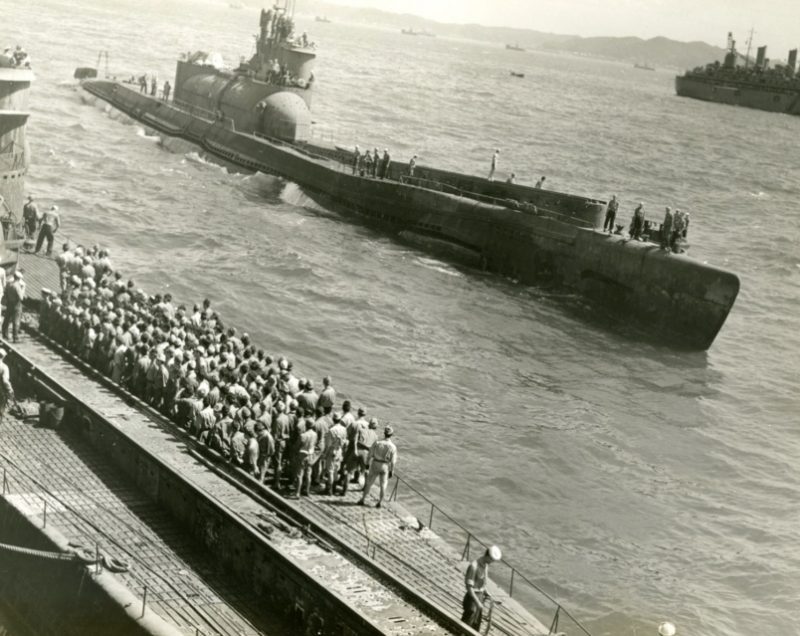Although they first came to prominence during the First World War, the early U-boats and submarines have subsequently been perfected and improved upon throughout the years. Advancements in military technology, science and engineering have seen the invention of a 19th Century German cavalryman become a staple of naval forces all around the world.
By the time of the Second World War, in fact, many nations across the globe had invested in new and groundbreaking submarines. One of these, described as a mega-submarine, was built by the Imperial Japanese Army. The construction of these incredible machines began in 1943, but more recent events have seen them back in the public eye.
An enormous Japanese submarine has been successfully mapped and filmed, a year and half after it was first discovered off the coast of Hawaii, and more than half a century since it first went down.
Decades ahead of its time, the I-400 submarine was among the largest and most technologically advanced submarines of its era. The space in which the submarine was housed was large enough to facilitate the launch of at least three float-plane bombers.
The submarine met a tragic end, however, in 1946. Remarkably, it actually met its fate after the Second World War was officially over, when it was deliberately sunk so as to hide its technologically advanced innovations.
American forces had examined the submarine extensively, but decided to have it scuttled. There was concern that they might fall into the hands of the Soviet Union, and so this drastic action was deemed necessary.
After sailing several of these behemoths to Hawaii for research, United States submarines torpedoed them. The Soviets had been putting pressure on American authorities to give them information on the Japanese technology, but this put a final end to that.
The wreck of the submarine was first discovered by divers in December 2013. Immediately after the discovery, NHK (Japanese Broadcasting Corporation) launched a new search towards the missing parts of the I-400 submarine.
The expedition was overall a great success for the team, as they first established the location of the wreck, which then followed the mapping and filming of submarine’s hangar. Team also managed to film the navigation platform and its bell.
The Operations Director and Chief submarine pilot of the Hawaii Undersea Research Laboratory (HURL), Mr. Terry Kerby said that the lack of a detailed bottom mapping data caused some major issues while locating the missing features of the iconic submarine including its hangar and conning tower.
He added that they were limited to only one dive a day, which meant that there was a strong chance that they might spend the whole day staring at the barren sandy bottom.
The team had a fortunate start, when a lucky guess turned out to be a great decision. At random, the search commenced from the northwest. Soon after the very first dive the massive hangar came on the screens causing a burst of emotions and excitement. The other items observed on the course of the discovery seemed amazingly intact despite lying in the bottom for last 7 decades, the International Business Times reports.
The director of the NOAA’s Maritime Heritage Program James, Delgado has said that the significance of the waters of Hawaii is immense not only for the people and culture of the native Hawaiians but also for the wartime history of the United States. He added that the Hawaiian waters are undoubtedly a veritable museum of maritime past.
NOAA’s Maritime Heritage Program is helping to conduct the search and survey mission off the coast of Hawaii, and is determined to carry on collaborating with HURL and NHK to bring forth more historic artifacts from the past.
